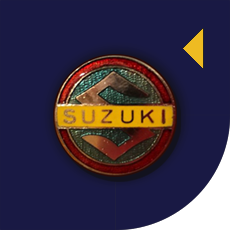Moto-Resto DR650 - Favorite Tools
I bought this Suzuki DR650s new in 1996 when I was living in Atlanta and rode it regularly until 2009... Late in 2019 I started a resurrection/restoration project on it - here are a few tools that made the work easier.
Disclaimer:
Motorcycles can travel at high speeds, mechanical issues can cause accidents, riders don't have much protection. Be careful!
Follow all the suggestions of folks who are wiser than me and don't even think about working on your moto if you don't know what you are attempting.
Be responsible and don't sue me, OK?
New favorite tools bought for the project
Shop cart for assembly (watch the load rating!)
(tools_shop_cart_2978.jpg) Working at standing height saved my knees and made the job go quicker. It's also easier to walk around and see things from different angles. As the parts get added to the frame the weight builds up, so use a safety line! In my case I bolted a series of pulleys to a main joist above the cart so I could raise and lower the engine, and later the assembled moto... I kept a couple of rope loop around the frame to the lift pulleys secured all the time in case the cart got bumped. To get the frame out of the top tray a couple of 2x10 cutoffs are perfect, leaving room to lose hand tools and bolts on the sides! Late in the project I added magnetic tool holders to two sides, wish I had done that sooner.
Motion Pro T-handles (especially the 1/4 inch size)
(tools-MP-T-drivers-IMG_3667.jpg) When I was wrenching bicycles as a teenager we had this Craftsman 1/4 inch T attachment - the 1/4 inch drive could slide the whole width, but it had a detent in the middle. I used that continuously back then but have no idea where it is today. This is even better because I can keep 3 sockets on the 1/4-inch tool (or 2 sockets and a 5mm allen driver). Only two socket heads on the 3/8-inch version. I like this thing so much I ordered another one to add to the on-bike toolkit. The bigger 3/8 inch version only holds two sockets, but it's also much beefier if you need to apply some torque to a bolt.
Threaded insert tools (and stainless inserts)
(tools-insert-tools-LG-IMG_3670.jpg) Get a pair with long handles if you want to install anything larger than M5 insert. The smaller one is useful for tight spots. If you buy the same brand they usually can share the replaceable threaded rods.
I started using threaded inserts years ago for scratch-building amplifiers and have found them really useful many times, but on this build they were a key tool. Side panels, seat attachment, brake reservoir mounts, choke mount, etc... all via stainless threaded inserts. They're strong and you can remove the parts later.
There is a trade-off with the insert materials to consider:
- Aluminum inserts are easiest to crimp, also the easiest to strip out is you squeeze too hard. There is galvanic corrosion between aluminum and steel - the electron exchange between the two metals can cause problems down the road. Aluminum inserts a great for plastic parts, and when you need to drill out and replace stripped threads in an alloy part.
- Steel inserts are common and inexpensive. They usually have some sort of coating to protect them from rust, but I wouldn't use them where they'll get long-term water exposure.
- Stainless steel inserts are the most expensive, and they take careful insertion because of the greater force needed to set them
- Inserts work better installed in sheet material where the collar can open up on the back side than into a solid block. Use a heli-coil is you need to repair threads on your motor.
- Go ahead and order at least one extra tool install rod for the common small thread (M4, M5, M6). You can break these if you twist the tool at the same time you are squeezing. Bigger thread sizes (M8, M10) don't have the same issues, but you may need a couple of cheater tubes to extend the handles for more leverage.
- Stripping the insert during installation is usually not a big issue, you can drill out a bad insert with the same drill bit you used originally and try again.
Snap ring pliers
(tools-channellock-spring-clip-pliers-IMG_3672.jpg) (tools-gearwrench-spring-clip-pliers-IMG_3673.jpg) I bought two models for the project - Channellock double-purpose and Gearwrench threaded heavy snap ring tool. The smaller Channellock pliers are flat cool with a reversible hub switch to convert them from squeezing to expanding, and well-finished pin sets. The Gearwrench threaded snap ring tool was purchased after reading posts here on engine disassembly, but they are great when you have a tricky mount where you don't want to worry about holding the same pressure while you maneuver the ring into place.
JIS screwdriver (Vessel No. 2)
(tools-JIS-stoppers-marker-IMG_3676.jpg) I ended up replacing nearly every JIS head bolt on the bike with stainless socket heads, but this driver made it possible. I never had it cam-out while removing a bolt... it's just remarkable how using the right bit makes a big difference.
Rubber stoppers (for painting and keeping openings clean)
I bought an assortment of black rubber lab stoppers online and used them everywhere. They kept engine openings and bearings inside pivots free of contamination and stayed in place for handling and moving parts from place to place. Also useful for painting (and faster than masking off holes). I also used stoppers as the forward fuel tank mounts to fit the C-brackets by drilling the centers for bolts. They don't wear out, so my bag of now randomly painted stoppers can be re-used for future projects.
A similar luxury is an assortment of cheap metric bolts. Screwed into threaded openings they protect, they are useful for hanging parts for painting, and they're reusable.
Acrylic paint marker (fill etched logos)
Want to fill in a logo on a handlebar or anodized part? Get an acrylic paint marker from the art supply store, apply it to the engraved area, let it dry for a minute, then wipe off the high areas with a clean cloth... reapply if you wiped off too much. These have sealing caps to keep them around for months of sporadic use.
Motion Pro brake bleeder
Yes, you don't really need this, I used plastic tubing, a glass catch bottle, and a small wrench for soooooo many years too. Still, it does make things much easier
Finally...What the hell is up with package designers and why is branding more important than confusing customers? Which of these is medium (blue) thread lock, and which is high strength (red)? (tools-confusing-threadlock-colors-IMG_3043.jpg)
Favorite DIY tools for the project
DIY sheet metal brake
Someday I'll have to buy a proper brake, but for small projects this worked for me. I bought a four-foot piece of 2-inch angle iron and cut it in half. Then used an angle grinder and an assortment of abrasive disks to flatten and polish the outside surfaces. For most of the small parts work like the rear signal box and the front toolbag shelf The parts were clamped into a heavy bench vise. For wider bends I added c-clamps outside the vise jaws to grip the metal evenly. Use a rubber mallet for a rounded curve, use a wider piece of hard maple and hit it with a mallet to get a tighter corner.
DIY signal evaluation jig
DIY sheet metal brake
Yes
Automotive panel-beating sand bag for metal forming
I used this to fabricate the alloy side panels for the DR650. It's is a leather-covered bag of sand - suede on one side and grain leather on the other. If you flatten the surface and start hammering in the middle you'll get a dish in the metal. The sand gives just enough to be able to control how much you want to curve the parts. Use a large wood dowel to get smooth radius bends. It's a slow and loud process that takes us back to our roots making things.
Painters tape
I think I used at least three rolls of painters tape in this restoration. Masking off areas I didn't want to paint, or wanted to paint a different color. Wrapping wires from the motor into a bundle with a piece of leftover 14ga house wire so it could be held in place away from the motor. Covering wear points on the frame during assembly to protect the epoxy paint.



